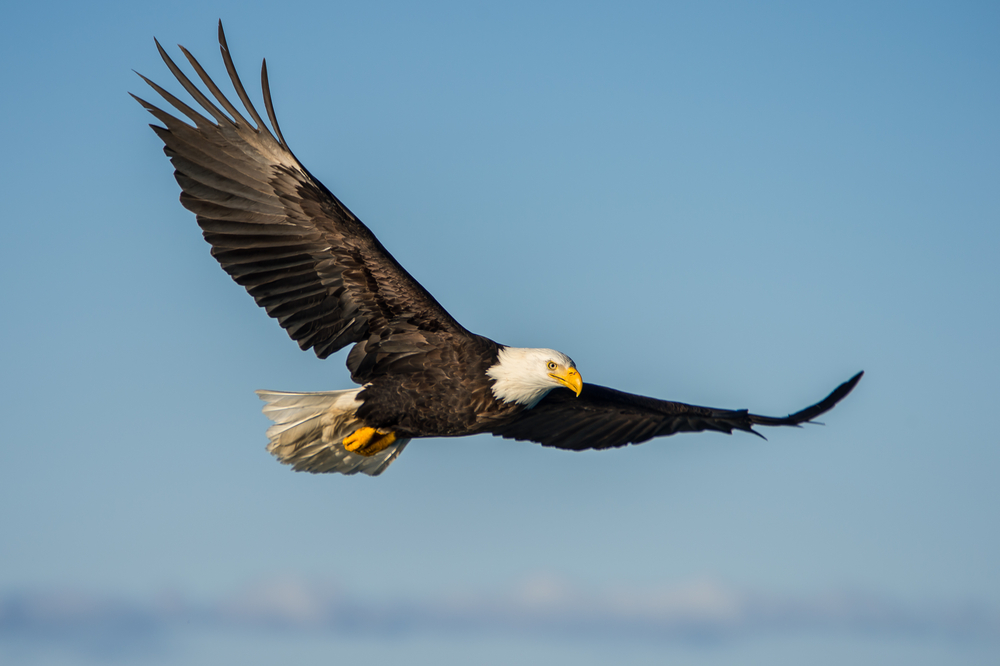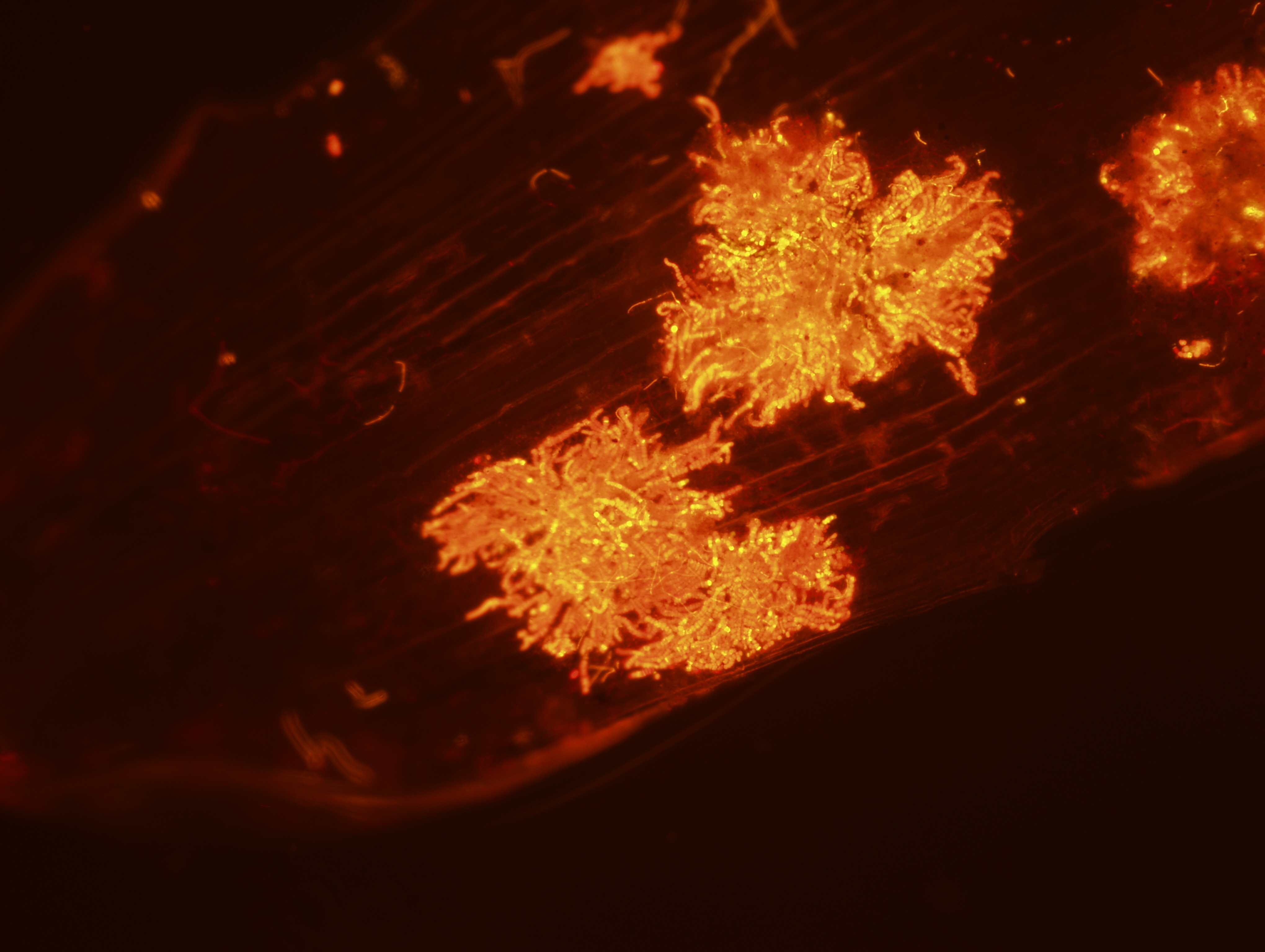Cause of mysterious bald eagle deaths found after 25 years
The mass deaths were gruesome.

A mysterious neurodegenerative disease has been killing bald eagles and other animals at lakes across the United States. And after 25 years of sleuthing, researchers have finally figured out its cause.
The disease, known as vacuolar myelinopathy (VM), was first discovered in 1994 when a large number of bald eagle carcasses were found near DeGray Lake in Arkansas. VM attacks the brains of infected animals, causing problems with motor functions and eventually leading to a "gruesome death," according to researchers.
"When the birds are really sick, they just look really drunk, they stumble around and fall down," co-author Susan Wilde, an aquatic scientist at the University of Georgia who has been studying VM since 2001, told Live Science. "But it gets even worse, they get paralyzed, blinded and can have tremors and seizures before eventually succumbing to the disease."
Initially, scientists had no idea how the eagles acquired the disease. Scientists eventually identified an invasive plant and later a particular species of cyanobacteria that seemed to be responsible, but the exact mechanisms behind VM continued to elude detection.
Related: 10 bizarre diseases you can get outdoors
Now, a new study has uncovered the culprit: a neurotoxin called aetokthonotoxin that is produced under certain circumstances by the cyanobacteria living on the invasive plants.
"A toxin produced by cyanobacteria that colonize a highly invasive plant, which has the capacity to affect diverse animal phyla, should not be underestimated in its potential impact on our environment," lead author Steffen Breinlinger, a doctoral student at Martin Luther University Halle-Wittenberg in Germany, told Live Science.
Sign up for the Live Science daily newsletter now
Get the world’s most fascinating discoveries delivered straight to your inbox.
What is VM?
Since it was first discovered in 1994, VM has spread quickly throughout lakes in the U.S.
"We have found it in nine states from Virginia to Texas," Wilde said. "But I don't think we understand just how many places this might be occurring."
A wide range of lake species also seem to be impacted by the disease — fish, frogs, snails, salamanders, turtles and snakes, as well as smaller birds like, coots, owls and waterfowl.
However, bald eagles (Haliaeetus leucocephalus) are one of the most affected species because they feed on all of these other infected animals, Wilde said.
"We know it's at least 130 eagles that have died testing VM-positive," Wilde said. "But the recovery rate of dead bodies is probably around 10 or 12%, so it's probably at least 10 times that number."
Researchers test for VM by performing a necropsy immediately after the animal's death. Lesions and damage to the brain are the only physical evidence of the disease and can only be properly identified during a short window of time after death. This makes tracking the disease and estimating deaths even harder, Wilde said.
Spreading across the U.S.
Early on, scientists discovered that VM was found only in lakes where an invasive plant species, Hydrilla verticillata, was also found. The Hydrilla, which is native to Central Africa, was first found in the U.S. in 1960 in Florida and has since become one of the most successful invasive plant species in history, according to invasive.org.
It only takes a few fragments of the Hydrilla plant or some of its tubers — structures created by plants to store nutrients that can also be used in asexual reproduction — to be introduced into a lake before it takes over and becomes almost impossible to remove, Wilde said.
However, scientists soon realized that not all lakes where Hydrilla grows were linked to VM, so something else must have been causing the disease.
In 2015, a new study by Wilde and colleagues identified a species of cyanobacteria (Aetokthonos hydrillicola) that was found on Hydrilla in lakes where VM was occurring in animals. But the exact cause of the disease still remained a mystery because the team couldn't explain how the bacteria were causing VM.

Solving the mystery
In the new study, Wilde sent samples of the cyanobacteria to Breinlinger and other researchers in Germany, who attempted to grow cultures of the bacteria and see what toxins they produced.
To their surprise, the German team found that cyanobacteria grown in regular cultures did not produce any toxin and seemed to disprove Wilde's theory that they were responsible for VM. However, when grown on cultures that included bromide, the plants produced a toxin that researchers now think causes VM. The toxin is called aetokthonotoxin, which translates to "poison that kills the eagle."
Exactly why the cyanobacteria produce the toxin and why they only do so in the presence of bromide is still unknown.
Bromide does occur naturally in lakes in small doses, but it is also introduced by humans in the form of herbicides (ironically used to control the spread of Hydrilla), as well as chemical run-off from both flame retardants and pollution from coal-powered power stations, Breinlinger said.
"It was only this discovery that made us aware that VM is also spreading due to anthropogenic influence," Breinlinger said.
Next steps
It is highly unlikely that VM will ever be eradicated from U.S. lakes, but now that scientists better understand the toxin responsible for it, they can figure out ways to control the spread and manage the disease, Wilde said.
Related: 50 of the most endangered species on the planet
"If we control the bromide in the reservoirs, Hydrilla will not accumulate in it and ultimately Aetokthonos [the cyanobacteria] will be stripped of its weapon," Breinlinger said. "Without bromide, it simply cannot produce the toxin in the first place."
However, it is equally important that researchers are able to locate all the places where VM is prevalent, and Wilde believes citizen scientists could play a crucial role.
"Citizens that recognize what Hydrilla looks like and when a bird is acting really strange could be huge," Wilde said. "We've just got to keep an eye out for it and keep it under control."
The researchers are also planning to do further research on how the new toxin affects small mammals, such as mice, to see just how dangerous it could be in humans.
"There is actually some of the toxin in the tissues that waterfowl hunters would consume," Wilde said. "It seems even more important to get to the point where we ask whether or not humans would have some health effects if we consume [the toxin]."
The new study was published online March 25 in the journal Science.
Originally published on Live Science.

Harry is a U.K.-based senior staff writer at Live Science. He studied marine biology at the University of Exeter before training to become a journalist. He covers a wide range of topics including space exploration, planetary science, space weather, climate change, animal behavior and paleontology. His recent work on the solar maximum won "best space submission" at the 2024 Aerospace Media Awards and was shortlisted in the "top scoop" category at the NCTJ Awards for Excellence in 2023. He also writes Live Science's weekly Earth from space series.










